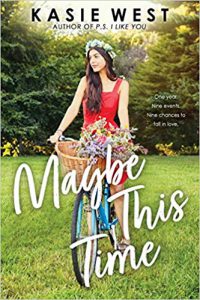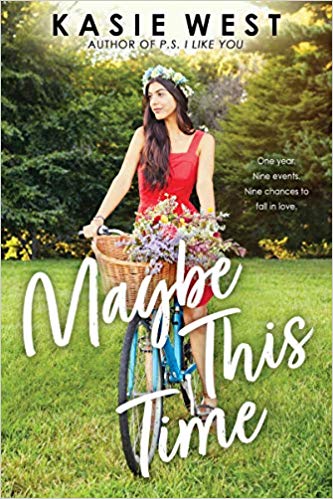 Her dad’s leaving after fifteen years with her mom makes Sophie Evans realize that with love there are no guarantees. Now, somewhat of a cynic on the topic of love, Sophie has a habit of not giving guys a chance. Furthermore, Sophie has hitched her dreams to her passion: to attend design school in New York. Craving a place full of action and creative energy, Sophie yearns to escape the simple and uncluttered life of Rockside, Alabama. Because she is so busy looking to the future that she forgets to enjoy the present, her good friend Micah Williams frequently has to remind Sophie to “play nice.”
Her dad’s leaving after fifteen years with her mom makes Sophie Evans realize that with love there are no guarantees. Now, somewhat of a cynic on the topic of love, Sophie has a habit of not giving guys a chance. Furthermore, Sophie has hitched her dreams to her passion: to attend design school in New York. Craving a place full of action and creative energy, Sophie yearns to escape the simple and uncluttered life of Rockside, Alabama. Because she is so busy looking to the future that she forgets to enjoy the present, her good friend Micah Williams frequently has to remind Sophie to “play nice.”
When Micah’s family catering business receives aid from famous chef, Jett Hart, whose son is along for the gig, Micah sets out to run interference. Andrew Hart represents affluence and city life, yet Micah doesn’t want to lose her bestie, so she tries to set her up with Kyle, a local boy in a band.
The foregoing outline alludes to the basic plot of Maybe This Time, a romantic comedy by Kasie West. West divides her novel into nine parts, using a signature flower to represent each of nine events that Micah’s family will cater and that Sophie, an employee of Every Occasion Floral, will work. Taking inspiration from her floral arrangements and finding beauty in the strange, Sophie sketches in her design journal, while her mother insists that she isn’t being realistic.
Buried amid the typical friendship, relationship, and parent-child conflicts of adolescent life, West’s book does emerge with some important lessons about growing up and seeing beyond what’s right in front of us. Although there is something warm and wonderful about wishing, recognizing things for what they really are rather than just how we want them to be is a sign of maturity.
To develop this idea about growing up, West uses the metaphor of taking a photograph. With a picture, we only see a part of the whole, and the photographer has to decide which part to include. According to Andrew, when taking a picture, “you just find the part that stands out the most or makes the most interesting shapes or tells the best story. . . . And if you don’t find it with your first shot, you have all the chances you want” (172) to take another shot.
With that metaphor, West’s character describes us all as the authors of our own life stories, stories that require editing and revision. West also tucks in a few “throw-away lines” that an astute reader will recognize as the paradoxes they are. Readers of Sarah Dessen will likely find this book satisfying. I’d recommend it as a beach book, a sugary treat to indulge a craving.

